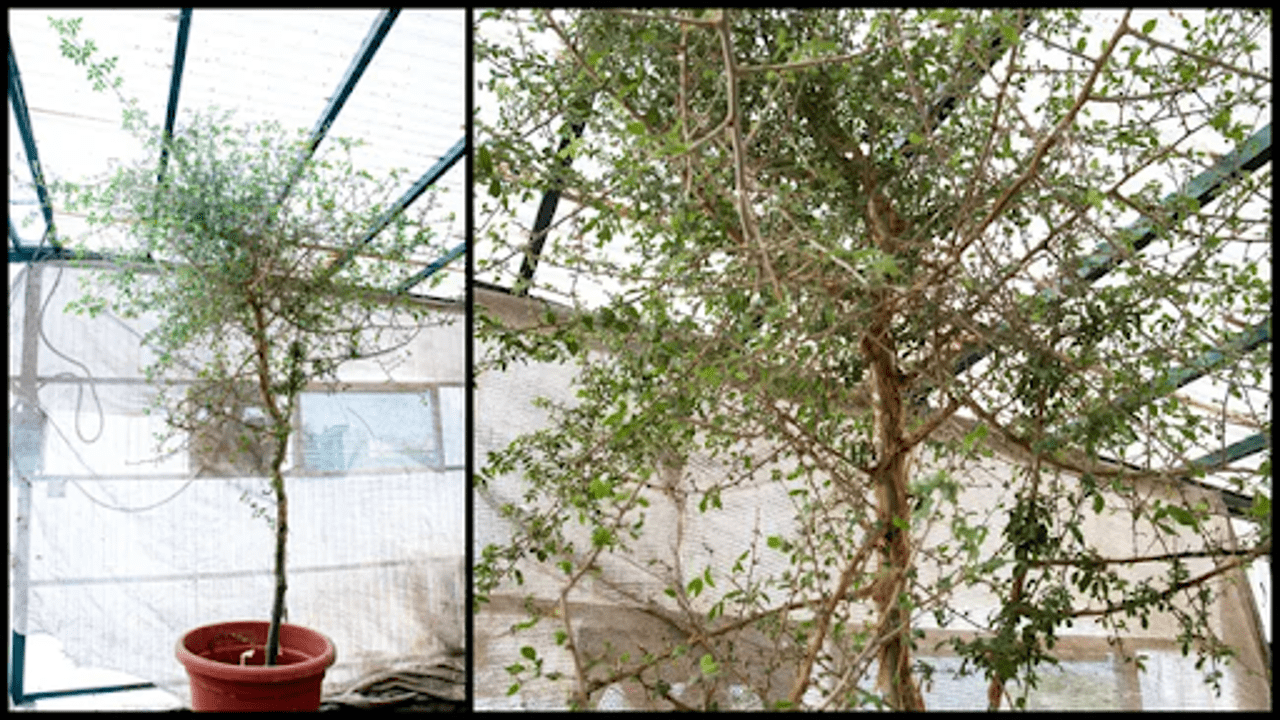
In 2010, researchers planted an ancient seed that had been found in the Judean Desert over 20 years earlier. Live Science
Scientists have successfully revived a remarkable 1,000-year-old seed unearthed from the Judean Desert, resulting in a tree that may belong to a lost lineage mentioned in the Bible. This fascinating project, which took nearly 14 years, has brought new life to an ancient specimen known as "Sheba." Now standing about 10 feet tall, Sheba has allowed researchers to explore its unique characteristics and conduct various analyses to uncover its origins, as detailed in a study published on September 10.
The seed that sprouted into Sheba was excavated from a cave in the late 1980s and has been dated between A.D. 993 and 1202. It is believed to have come from a now-extinct population of trees that thrived in the Southern Levant, which includes parts of modern-day Israel, Palestine, and Jordan. Notably, Sheba is the first tree of its kind discovered in this region.
Intriguingly, researchers speculate that this newly revived tree could be linked to "tsori," a resin mentioned in the Bible associated with healing, as referenced in the books of Genesis, Jeremiah, and Ezekiel. "The identity of Biblical 'tsori' (translated in English as 'balm') has long been open to debate," the researchers stated in their study. The substance is closely tied to Gilead, a historical region east of the Jordan River known for its medicinal properties. With Sheba's revival, scientists believe they may have finally shed light on the mystery surrounding Biblical tsori.
After extensive analysis, researchers identified Sheba as belonging to the genus Commiphora, a group within the myrrh and frankincense family, which comprises around 200 living plant species primarily found across Africa, Madagascar, and the Arabian Peninsula. However, the exact species of Sheba remains uncertain since it has yet to flower, preventing further examination of its reproductive material.
Scientists have sown a 1,000-year-old seed known as Sheba. Live Science
What is evident is that Sheba shares close genetic ties with three Commiphora species found in southern Africa: C. angolensis, C. neglecta, and C. tenuipetiolata. Although the tree has weaker connections to Commiphora species known for producing fragrant resins, such as C. gileadensis—thought to be a source of the renowned "Judean Balsam"—the researchers ruled out this idea due to the absence of aromatic compounds in Sheba.
"Our initial hypothesis was that 'Sheba' might be a candidate for the historical 'Judean Balsam,'" the researchers explained, but the findings led them to reconsider. Instead, chemical analyses revealed that Sheba is rich in pentacyclic triterpenoids, biologically active compounds with anti-inflammatory and anti-cancer properties. The tree's leaves and stems also contain squalene, a natural substance known for its antioxidant and skin-smoothing benefits. Further research is needed to identify another compound within Sheba that may hold potential anti-cancer properties.
"We believe these findings support our second hypothesis, that 'Sheba' may represent an extinct lineage once native to this region, whose resin 'tsori' was valuable and associated with healing but not described as fragrant," the researchers stated. Meanwhile, the search continues for the source of the historic Judean Balsam. The researchers noted that if it still exists today as an extant Commiphora species, it may yet be unrecognized by scientists.















